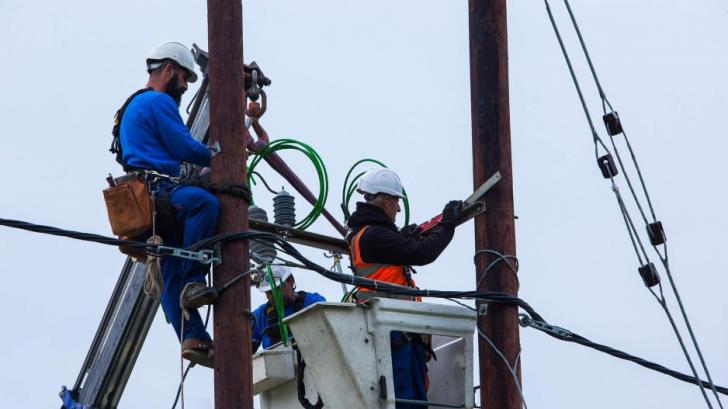EAC crews are climbing about 260.000 poles across Cyprus to replace compatible LED bulbs, which will save several million euros a year while reducing air emissions.
Characteristic of the savings that will be achieved is the case of the Municipality of Strovolos which at this stage pays annually for road lighting € 1.050.000 without VAT. When it replaces all light bulbs with LED bulbs it will pay € 350.000 per year.
The EAC has recently begun contacts with all municipalities and has already closed with 29 of them, three of which are taking the decisive step of adopting "smart" lighting, which will bring even greater savings than economical LED lamps since the municipalities they will be able to selectively turn off light bulbs or even reduce their performance by up to 50%. Smart luminaires were chosen by the Municipalities of Paphos, Limassol and Ayia Napa. The only municipality that has not yet decided to replace the lighting fixtures is the Municipality of Paralimni, while the Municipalities of Nicosia and Aglantzia expect to clarify the issue with the offers they have announced. The specific municipalities had decided not to cooperate directly with the EAC but to announce offers with the participation of private suppliers.
At the same time, with a decision of the Minister, the EAC will replace the lamps in 100.000 poles located in 350 communities.
An EAC executive told "F" that 17 suppliers were selected based on economy and quality, and three of them were selected to meet the double goal of economy and quality. AIK executive said the companies selected were indeed cheap, and that when municipalities asked for offers from other individuals, they found that the Authority's pronunciation was much cheaper and even covered maintenance for eight years.
Smart lighting in three municipalities
Smart lighting, which is expected to be adopted by a large number of Local Authorities in the future, has several advantages that ultimately lead to more savings than LED lamps, although their consumption does not differ significantly. How the system works: As explained to us, there is a central server installed, which through an intermediate control device, "communicates" with the smart luminaires / lamps. Each intermediate device controls the luminaires in designated areas and for example in Ayia Napa 13 intermediate devices control 1.800 luminaires.
The intermediate device (controller) has a built-in telephone card which is commanded by a central server which for example instructs to turn on all the lights or reduce their efficiency eg 80% or 50% of their power so in the latter case the consumption (and therefore the bill) is reduced to 50%.
The server receives information from the controller if there is any problem with any of the approximately 120 luminaires it controls in the neighborhood where it is installed.
Once a luminaire does not light, the central server is notified via a controller and telephone line, and the administrator checks, for example, that 7 luminaires have not been lit. The EAC sends a signal to determine whether or not the luminaires have a problem. If the repeat inspection (from the central ones) confirms that a luminaire is not on, then a workshop is sent on the spot.
The technology in the case of smart lighting is such that if a homeowner complains that the lamp outside his home emits dazzling light, there is a possibility that instructions will be given to reduce the light intensity.
Of course, to make this possible, each luminaire has its own code and is placed on a specific pole. If this is not done, the luminaire will not "execute" the instructions that come centrally.
AIK executive said that the damping of smart luminaires, although they have an increased purchase cost by 30% -35% compared to conventional LEDs, nevertheless the savings (depending on the scenario chosen by the Local Authority) is depreciated in 2-3 years, due to the savings resulting from the selective reduction of luminaire performance.
Low consumption lamps
The EAC proposes to the Local Authorities three types of lighting fixtures that will replace the existing ones.
The 30-watt LED bulb will replace the existing 70-watt bulb, the 50-watt (LED) light bulb will replace the existing 150-watt bulb, and the 100-watt bulb (LED) will replace the compatible 250-watt bulb.
The EAC has already replaced the lighting fixtures in the Municipalities of Deryneia, Ayia Napa, Aradippou, Livadia, Larnaca (completed), Dromolaxia-Meneou, replaced in Geri, in Latsia (completed), in Engomi, Agrotoro (Agios Dolometo 2-, Latakia 3 months).
The replacement is also being promoted in the Municipality of Sotira, Polemidion, Mesa Geitonia, Agios Athanasios and will be followed by the Municipality of Limassol.
In Paphos, the replacement concerns the Municipalities of Pegeia (completed) and Geroskipou begins and will be followed by the Municipality of Paphos.
In the municipalities, the replacement of the lighting fixtures is expected to be completed by the beginning of 2021.
Source: philenews
